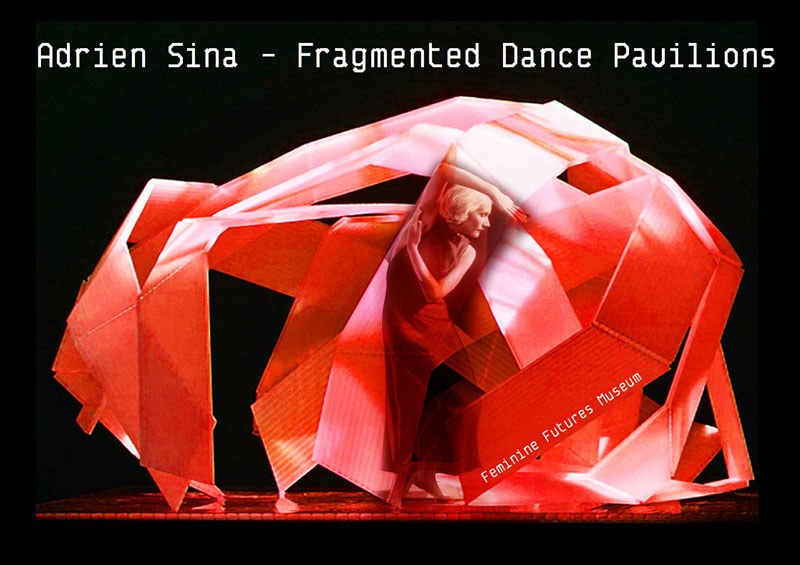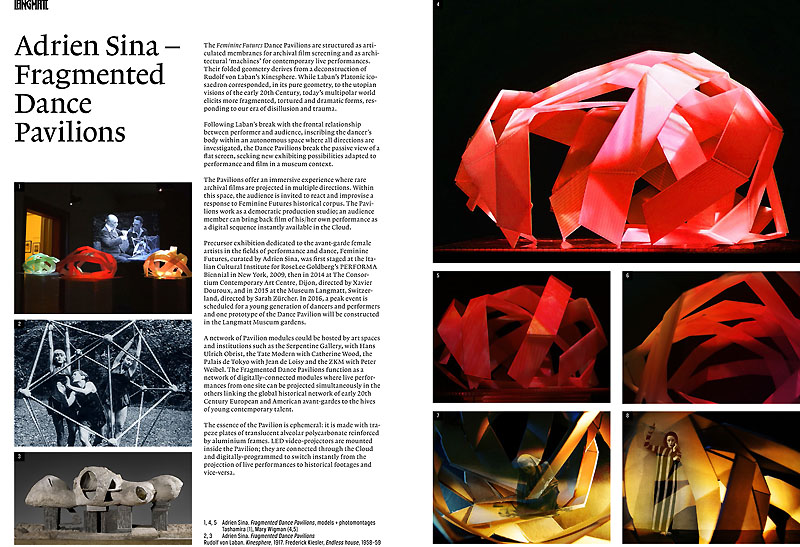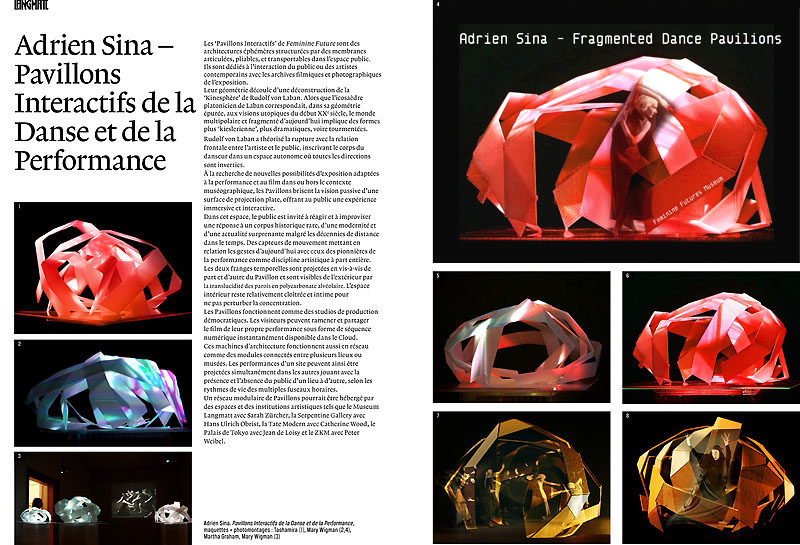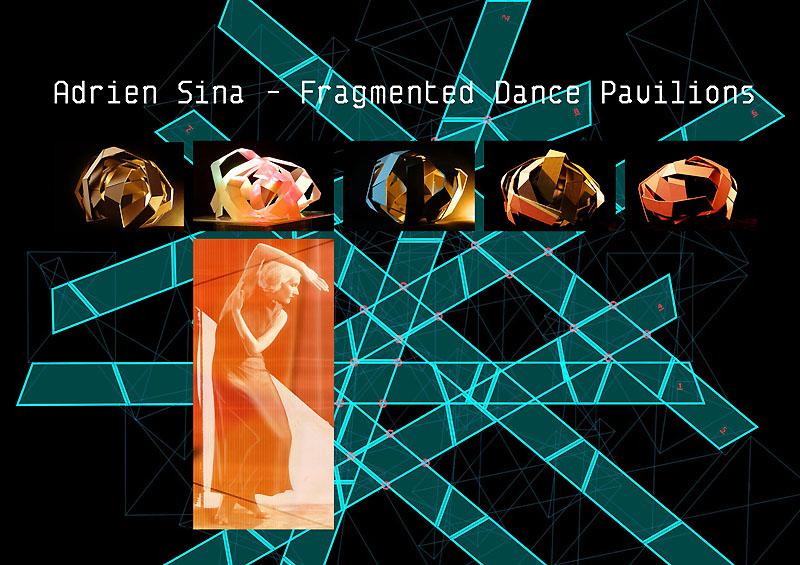

| Fragmented Dance Pavilions Feminine Futures – The Membrane of the Dream Museum Langmatt, Switzerland ~ Adrien Sina 2015 |

 |
|
 |
|
 |
|
  |
|
 |

|
The Feminine Futures ‘Interactive Pavilions’ are ephemeral
architectures structured as articulated membranes, foldable and
transportable in museums and public spaces. They are dedicated to the interaction of the visitors with contemporary artists in film and photographic records of the exhibition. Their geometry stems from a deconstruction of ‘Kinesphere’ Rudolf von Laban. While Laban Platonic icosahedron corresponded in its refined geometry, utopian visions of the early twentieth century, and fragmented multipolar world today involves more forms ‘kieslerienne’ more dramatic, even tormented. Rudolf von Laban theorised the break with the frontal relationship between performer and audience, inscribing the dancer’s body within an autonomous space where all directions are investigated. Seeking new exhibiting possibilities adapted to performance and film in a museum context, the Dance Pavilions break the passive view of a flat screen, offering to the audience an immersive and interactive experience. In this space, the public is invited to react and improvise a response to a rare historical corpus, a modern and surprisingly topical despite decades of distance in time. Motion sensors linking today’s actions with those of the pioneers of performance as a separate art form. Both temporal fringes are projected vis-a-vis to each side of vessel and are visible from the outside by the translucency of polycarbonate walls. The interior space is relatively cloistered and intimate to not disturb the concentration. Pavilions function as democratic production studios. Visitors can bring back and share the film their own performance as a digital sequence instantly available in the cloud. These architectural ‘machines’ function as a network of digitally-connected modules between several places or museums. The performance in one site can be projected simultaneously into another playing with the presence or absence of the public from one place to the other, according to the rhythms of life following the time zones. A network of Pavilion modules could be hosted by art spaces and institutions such as the Langmatt Museum with Sarah Zürcher, the Serpentine Gallery with Hans Ulrich Obrist, the Tate Modern with Catherine Wood, the Palais de Tokyo with Jean de Loisy and the ZKM with Peter Weibel. The Fragmented Dance Pavilions function as a network of digitally-connected modules where live performances from one site can be projected simultaneously in the others linking the global historical network of early 20th Century European and American avant-gardes to the hives of young contemporary talent. The essence of the Pavilion is ephemeral: it is made with trapeze plates of translucent alveolar polycarbonate reinforced by aluminium frames. LED video-projectors are mounted inside the Pavilion; they are connected through the Cloud and digitally-programmed to switch instantly from the projection of live performances to historical footages and vice-versa. |



|
|
|
|
|
|


| © Adrien Sina |
